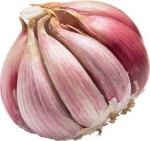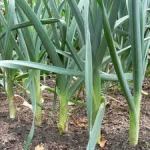Today I bought my garlic and onions for Autumn planting all ready to be planted out except we are getting an entire month’s worth of rain in one day today so not even my waterproof trousers are giving me the confidence to brave the weather.
Instead I’ll just note down a few interesting facts about the three different Allium species I’ve chosen.
I have Elephant garlic which is good for roasting and has a sweet, mild flavour. Elephant garlic’s latin name is Allium ampeloprasum so is not a true garlic but a member of the onion family nonetheless.
I also bought Garlic ‘Marco’, Allium sativum ‘Marco’ which has a distinctive strong flavour and is a good storer.
Garlic needs a free draining fertile soil in full sun. Before planting the ground should be dug over, removing weeds and adding well rotted compost if needed and a general fertilizer to improve yields. The bulbs should be broken into individual cloves which are then planted 3cm deep and 10cm apart along the row. When the leaves start to die back in the following summer the garlic can be lifted and left to dry and ripen on the surface for a few days.
Lastly, I’ve chosen Onion ‘Electric’, Allium cepa ‘Electric’, an overwintering red onion for early harvest and whose young growth can be used as spring onions. Apparently it’s very good in salads and stir fries. Soil preparation is the same as for garlic but they require a distance of 12cm apart in rows that are 30cm apart so a little more room than garlic. Protection from birds will probably be a good idea as they like to pull them out of the ground.
Now I just need the rain to ease off!





